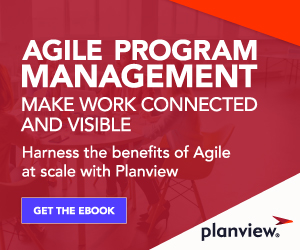
Whether you’re new to Agile or a seasoned practitioner, it never hurts to brush up on your Agile terminology! Bookmark this alphabetized glossary of key Agile terms to use as a reference whenever you need it.
Agile Terminology to Know
Acceptance Test
A set of criteria, written from the perspective of the customer, to ensure that the product created meets its requirements. There are only two possible outcomes of an acceptance test: Pass or fail.
Acceptance testing is a clear, easy way to ensure that Agile teams are creating products, features, or services that meet their intended objectives.
Agile Manifesto
Although originally written for software development (by a group of software developers), the Agile Manifesto is still considered to be a foundational text in the study and practice of Agile. The Agile Manifesto includes four values and twelve principles that explain the key concepts of Agile development. Much of the Agile terminology that is used today has roots in the Agile Manifesto.
The four values are:
- Individuals and interactions over processes and tools
- Working software over comprehensive documentation
- Customer collaboration over contract negotiation
- Responding to change over following a plan
You can read the Agile Manifesto in its entirety on the Agile Manifesto website.
Backlog
The term ‘backlog’ refers to prioritized work that has yet to be completed. Since many teams who practice Agile use Kanban boards to visualize and manage their work, the term can also be used to refer to the lane (on the far left of the board) where these work items are held until they are started.
Business Agility
Business agility refers to an organization’s ability to adapt and respond quickly to changes — which requires a carefully balanced combination of dynamic and stability-enhancing practices. You can learn more about the definition of business agility in this post.
Burndown Chart
A visualization used by Agile teams to measure progress, a burndown chart depicts the outstanding work items (in each period of time) on one axis and the time left to complete it on the other.
Cadence
Cadence refers to the flow or rhythm by which work is delivered. It can also be used to refer to the length of a team’s development (or execution) cycle.
Capacity
Capacity refers to the amount of work that an individual, team, or organization can accomplish in a specific amount of time.
Continuous Improvement
Continuous improvement is the perpetual practice of identifying and acting upon opportunities for improvement. It can be viewed as a formal process, or as an informal set of guidelines.
You can learn more about continuous improvement in this post.
Definition of Done
In Agile, knowing when a piece of work has been completed is essential for calculating key Agile metrics such as lead time and cycle time. The definition of done is a term used to describe the criteria that a team determines before starting a piece of work, in order to be able to say whether or not that work has been completed.
Epic
In Agile, an epic is a large piece of work that a team aims to complete within a fixed period. Teams will typically aim to complete 2-3 epics within a quarter. Epics are broken into smaller increments, called user stories (see user story, below).
Iterative Development
Much like it sounds, iterative development is the practice of developing a product in iterations — delivering small, workable bits of value frequently, and incorporating learnings into future iterations.
Program Owner
In Agile, the Program Owner is responsible for defining User Stories (see User Story) and prioritizing the backlog. The Product Owner is responsible for maximizing the value that the team produces and ensuring that the Definition is Done is met for each piece of work delivered.
SAFe®
SAFe® is an acronym for Scaled Agile Framework®. It is the most popular and widely recognized framework for scaling Agile across enterprises.
In true Agile fashion, SAFe® is an iterative framework, which is updated frequently to best meet the needs of modern Agile teams. Learn more about SAFe here.
Scrum
Scrum is an Agile framework used primarily in software development to develop, deliver, and sustain complex products. It is a set of meetings, tools, and roles that work together to help teams structure and manage their work.
Sprint
A sprint is a short, focused period during which Agile teams aim to complete a predetermined amount of work. Sprints are most commonly two weeks long, although this can vary by team.
Sprints are most typically associated with Scrum, but are widely used by Agile teams who do not actively practice Scrum.
Standup Meeting
A short, frequently held meeting, during which Agile teams discuss any impediments to their work and create a plan for how to keep work moving forward. These meetings are called standup meetings (or simply standups) because they are meant to be short enough for participants to take the meeting while standing.
User Story
A User Story is a requirement or request that a team aims to complete — in other words, a task. In Agile, these are called user stories because they are written from the perspective of the customer, or user.
Velocity
In physics, velocity is the measurement of speed with respect to direction. In Agile, velocity refers to the number of units of work that a team can complete in a given amount of time. A unit of work can be measured in myriad ways, including user stories, story points, or engineer hours.
Velocity is widely used in Agile as a calibration tool to help development teams estimate how long it will take them to complete a specific amount of work.
More Agile Terminology
This glossary of Agile terminology gives an overview of the key terms you’ll likely encounter as you learn more about Agile. To learn more about Agile check out Agile Methodologies: A Beginners Guide and discover the history of Agile, how to create an Agile team, benefits and best practices, and more.




